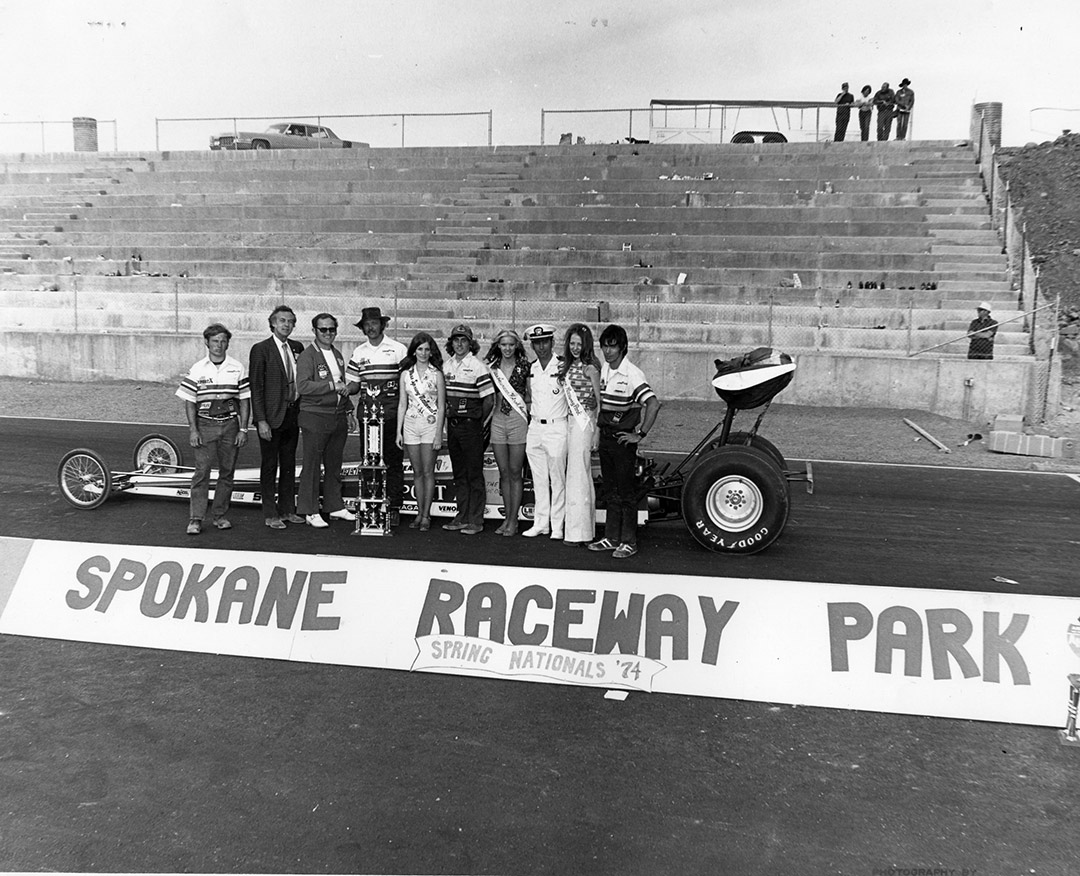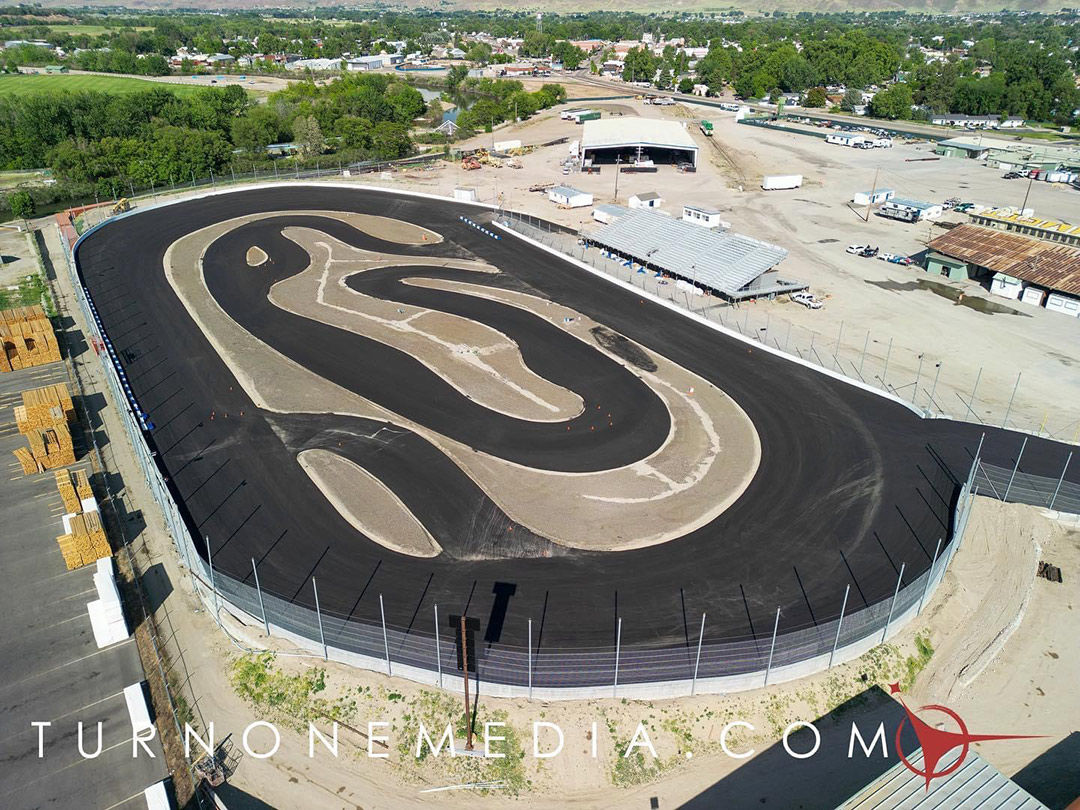Ed Sneva Memorial back at Stateline Speedway, June 1
STATELINE — The Ed Sneva Memorial race returns to Stateline Speedway on Saturday, June 1 bringing with it a tribute to Spokane’s long-time family of speed.
The featured Can-Am Sprints will be the featured class with nearly 30 cars pre-entered according to Shawn Priest and features a family connection, TJ Sneva, son of the late Jerry Sneva.
“We only have a few rules, no wings, American racers tires, and no bad attitude,” Priest wrote in an email.
Any sprint car or supermodified chassis is allowed. Some were built in the 1970s to today’s modern style sprint cars. Drivers ages have ranged from 15 to 85 years old so some drivers have years of experience and some are just starting their career.

Edsol Sneva at the Mead Speedway in the 1950s. File photo
First organized in 2015, the event honors Edsol Sneva who began racing both locally and regionally in the 1950s.
Edsol “Ed” Sneva died in 2014, but “Dad was not the funeral kind of guy so having a race like this is what he would have wanted,” his youngest son, Blaine Sneva once said.
“He built a family dynasty of race car drivers, it was amazing,” said Norm Ellefson who drove against Tom Sneva many times in the 1960s and 1970s.
Three of the boy’s, Tom, Jerry and Jan all have driven on the sacred ground of the Indianapolis Motor Speedway. Tom earned his place in motorsports history winning the coveted race in 1983, helping pave his road to induction into the Motorsports Hall of Fame of America in Detroit.
In a comparison best illustrated by football, what Edsol Sneva accomplished might compare him in some respects to racing’s version of Archie Manning whose sons, Payton and Eli, have accomplished amazing things on the football field.
Edsol moved to Spokane and finished his formal “book learning” in 1948, graduating from Lewis and Clark High School. There he was a standout athlete, a four-year letterman in football, basketball and track.
He met Joan Giles and they graduated together. They were married Feb. 26, 1948 and made Spokane their home. Ed and Joan had six children, five boys and one girl.
Ed began his love of racing cars in 1950, first at Mead Speedway, then Wednesday nights at Memorial Stadium, better known now as Albi Stadium.
“The first day out he made a clean sweep,” Joan Sneva said in a 1973 Spokane Daily Chronicle story of Ed’s debut on the dirt track at Mead .
“I just knew he’d make a big fool of himself, and I remember saying that to him, too,” said in a 1973 Spokane Daily Chronicle story. “I just couldn’t believe it (the sweep). I didn’t think he knew what he was doing in the first place, but he sure did.”
Joan Sneva, who passed away in 2017, also remembered in that story how Ed started racing before he was the legal age of 21. He had newspaper delivery routes to pay for his racing habit.
Ed dominated racing in the Inland Northwest as a driver. At one point the other drivers coerced the promoter to buy
Ed’s winning car and cut it up. But his sponsor, the city of Ritzville, just built him another car and it kept on winning.
When he finished racing, Ed started an automobile repair business in Spokane and a race car shop in the basement. When they were old enough, Ed passed along his love for racing to his sons.
Tom was the first one to enjoy Ed’s innovations. Ed built the first rear engine short track car, which Tom raced locally and against the Canadian American Modified Racing Association (CAMRA) teams.
With the success of that rear-engine, low-budget car, and Ed being an innovator, he came up with an idea and approached friend and racecar builder Jim Tipke.
He wanted Tipke to build the most radical short track race car ever for Tom to drive. It would be a rear engine, offset, 4-wheel drive car that dominated CAMRA right out of the shop. The competitors wanted the car banned. Tom easily won the 1970 CAMRA championship, helping to launch his IndyCar career.
Sneva had no formal mechanical training, just a natural God-given ability for what he did. His ability was natural, Blaine Sneva said. “Why have something that someone else has if you can make it.”
As for Sneva and Tipke, among others, “(They) didn’t know they can’t do things, so they just go ahead and do them,” added Ellefson, a member of the Canadian Motorsports Hall of Fame.



